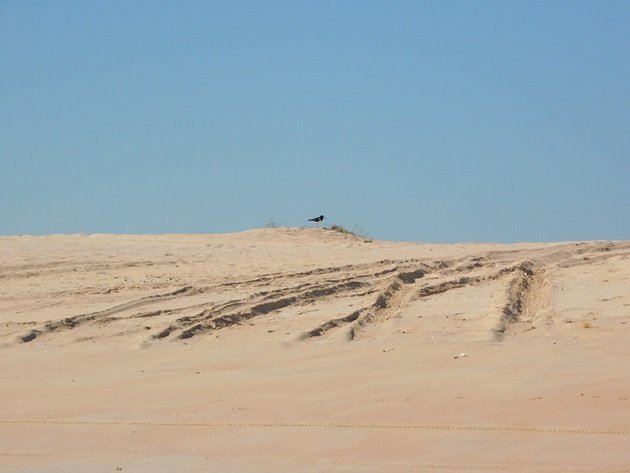
Following on from the sad loss of our first Pied Oystercatcher chick of 2020 the other eggs are now also hatching. The pair of Pied Oystercatchers that nest to the north of the vehicle beach access were due to hatch this week. I mentioned the disregard to the signage asking for vehicles to not go into the dune system two weeks ago. The vehicles continued to ignore the signage. Arriving at the sign on Tuesday 21st July we were not impressed to see the amount of vehicle tracks that were now in the area of the nest. The header photo above shows all of the vehicle tracks heading to the nest site area. There was a Pied Oystercatcher watching over the beach as we arrived at the sign.
We moved slowly up above the high tide mark. The fact that there was an adult Pied Oystercatcher stood there meant there was still something to guard. More importantly it called out to us. Grant was just ahead of me concerned that the nest would not have survived the recent traffic. Suddenly another Pied Oystercatcher called out to us. Grant had just walked towards the nest and not seen the adult Pied Oystercatcher in his concern for the nest. Just below the adult Pied Oystercatcher there were two fluffy chicks. One chick is next to the left foot of the adult and the other in the vegetation to the left in the photo below. Somehow the twenty eight days passed without the eggs being run over.
Pied Oystercatcher with two chicks
We moved back and sat on the sand and watched the Pied Oystercatcher family. The chicks must have hatched out very recently and one was more agile than the other. There is always one chick that is clumsier than the other when they leave the nest site. The first one to hatch has had time to find the strength in their legs, while the second one has to learn to move sooner. Pied Oystercatchers always try and move away from the nest site as soon as possible once both eggs are hatched. There can be a day between eggs hatching, but if the second egg does not hatch the adults will give up on it. Realising that the egg is not viable they need to move away from the nest site and start to feed the new chick.
As we sat observing the Pied Oystercatcher family the adult with the chicks moved down onto the sand below us and the other one stood guard.
Pied Oystercatcher family
Over the years we have been observing Pied Oystercatchers we have noticed that they always appear to feed shell grit to the chicks for the first few days before they move to the sea to feed.
Pied Oystercatcher possibly feeding chicks shell grit
The Pied Oystercatcher led them onto the open sand and they ran along. It is hard not to take lots of photos of such precious birds. It is amazing how thick the legs are when the Pied Oystercatcher chicks hatch out! They are designed for walking! Even adult Pied Oystercatchers spend a lot more time walking than flying.
Pied Oystercatcher and two chicks
Although the following photo does not show the full features of the adult I do like it, because both chicks had their right feet up at the same time!
Pied Oystercatcher chicks with right feet up!
The adult Pied Oystercatcher tried to convince the chicks to rest. As the adult bird lowered down the chicks were pushed under to rest in the shade.
Chicks resting under an adult Pied Oystercatcher
It was only a few minutes and one chick was trying to escape from underneath the adult Pied Oystercatcher. Both adults moved in together and they started to move off. The adults are aware of all of the dangers in the area. Predators from above appear to be constantly on their minds. We observed them turning their eyes to the sky on a regular basis as they moved away from the exposed sand.
Pied Oystercatchers constantly looking up
Their next move was to an area where there was more vegetation. This offered shade and camouflage for the family as the sun started to dip in the sky late on Tuesday.
Pied Oystercatcher family
This pair of Pied Oystercatcher usually moves north when the chicks have hatched out. It places them closer to the exposed reef on big tides and also moves them away from the majority of the traffic. We know they will walk a long way, so we cycled to the beach and headed north on foot at high tide. Choosing high tide on Friday meant there would still be vehicles on the beach, but not as many as when the tide is lower. On big tides you can’t access Cable Beach by vehicle unless you commit to several hours on the beach until the tide turns and the sea drops from around the rocks. We walked for five kilometres until we found our Pied Oystercatchers.
The Pied Oystercatchers had moved over three kilometres from the nest site since Tuesday. They had arrived at the same location that they took their chicks last year. We were saddened to observe that there was only one chick now. Initially the adults were at the sea and the chick was on the wet sand a few metres away. They had warned it vocally of our presence and it had dropped to the ground. We waited and they called out the “safe” sound, which we have become familiar with over the years. It would be nice to think they know us since their arrival at this location on Cable Beach in 2008!
Pied Oystercatcher family
The chick moved to join its parents at the edge of the sea to feed. We sat and observed the family for some time. It was amusing watching the chick in the waves. Pied Oystercatcher chicks can swim, but sometimes it appeared to be surfing!
Pied Oystercatcher family
It is sad to think that the Pied Oystercatchers eggs survived the vehicle traffic to then lose a chick a couple of days after hatching. This is not unusual. Hopefully they will be able to protect this chick until it can fly in a few weeks’ time. As one challenge ends another begins for them.


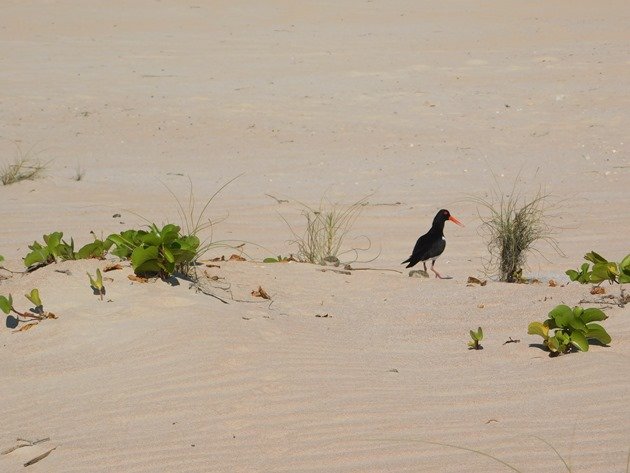
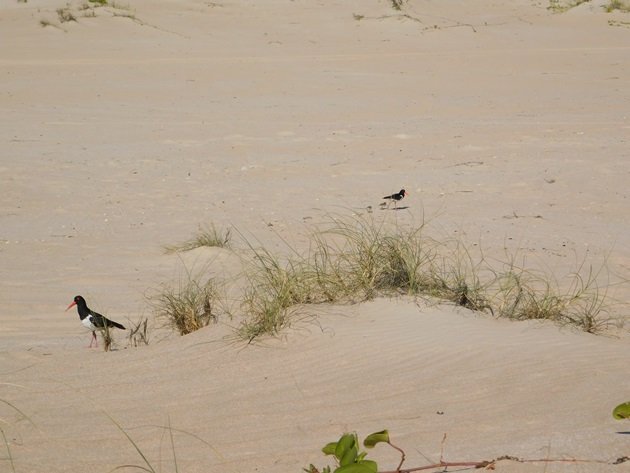
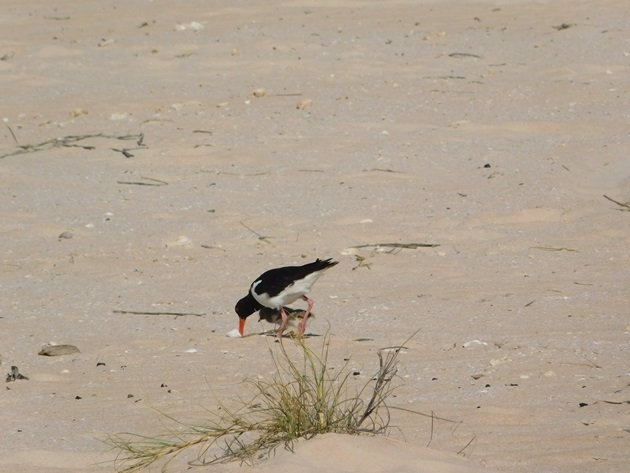
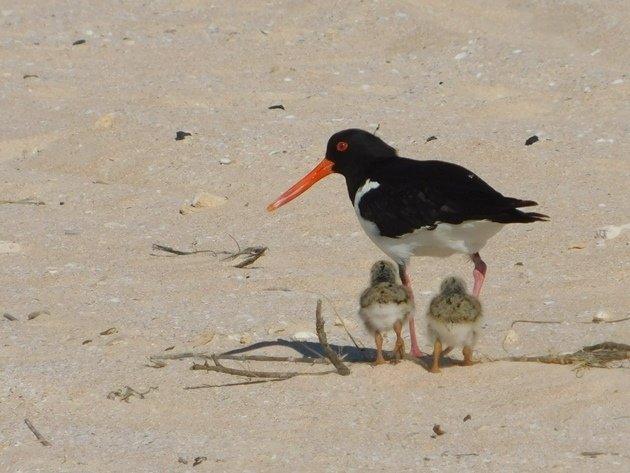
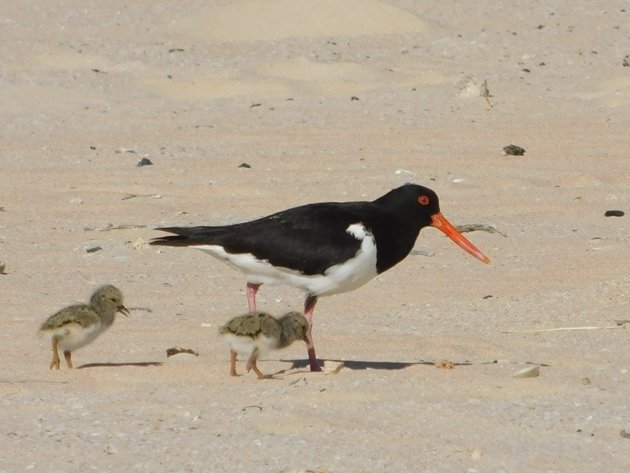
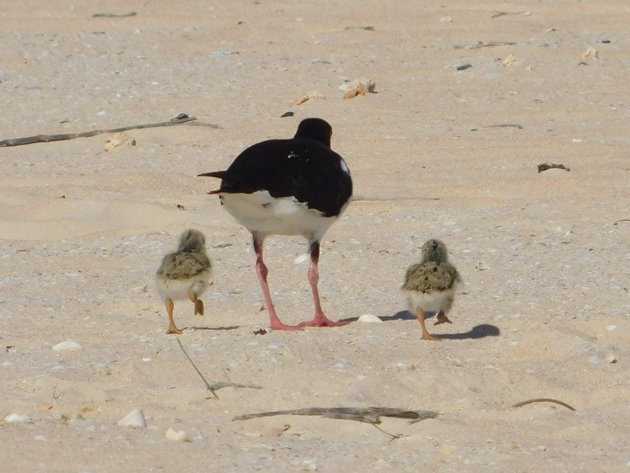
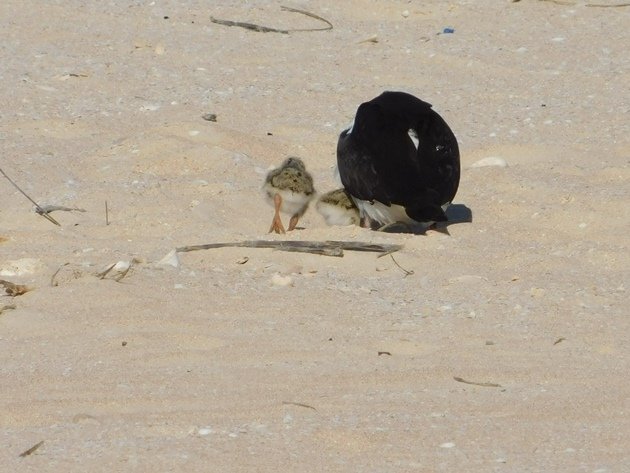
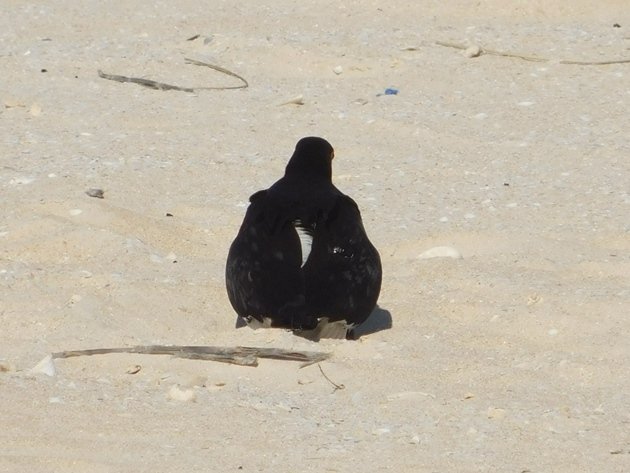
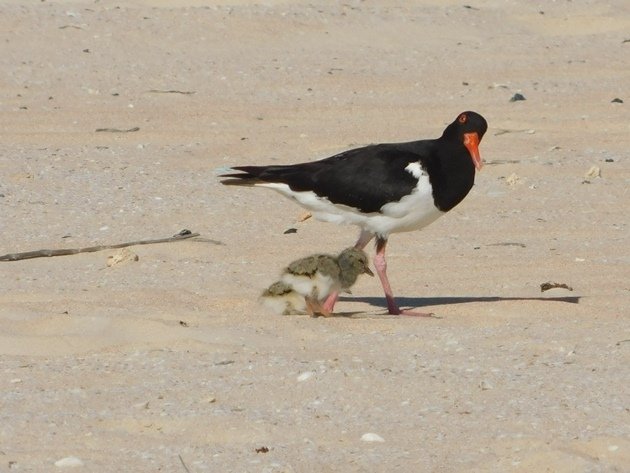
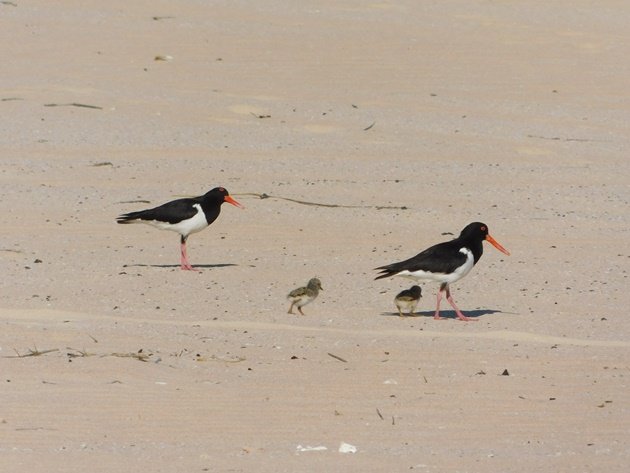
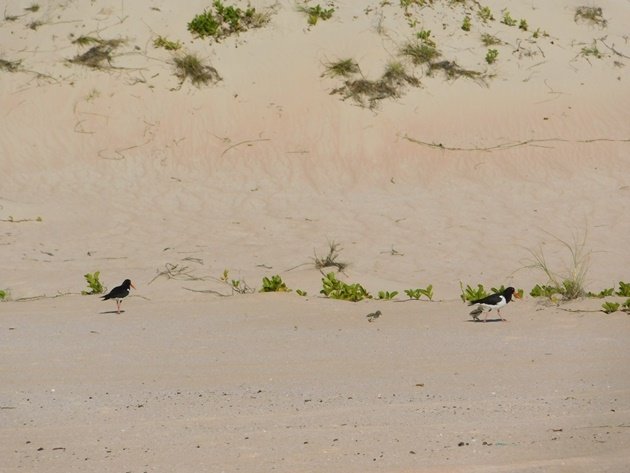
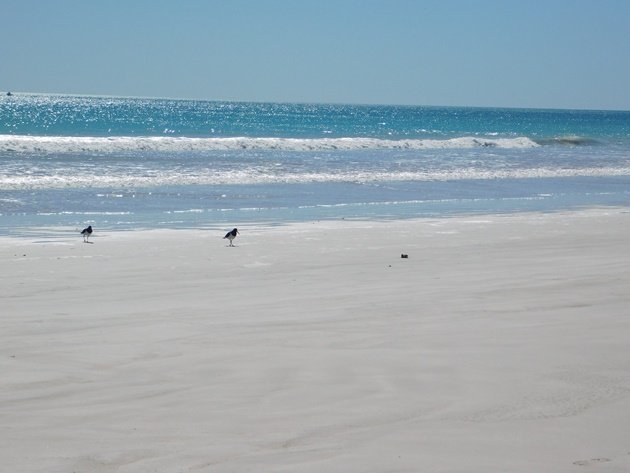
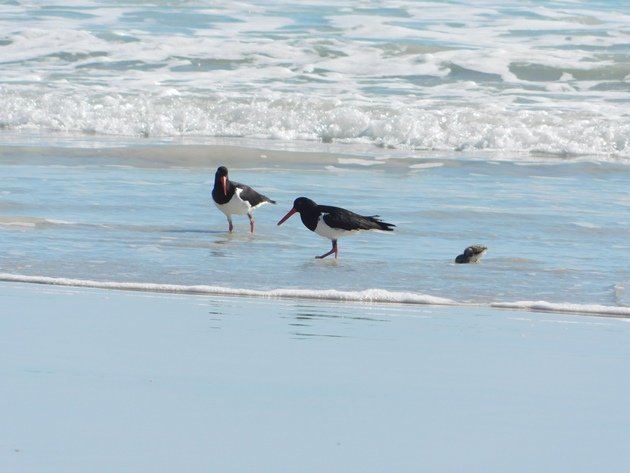
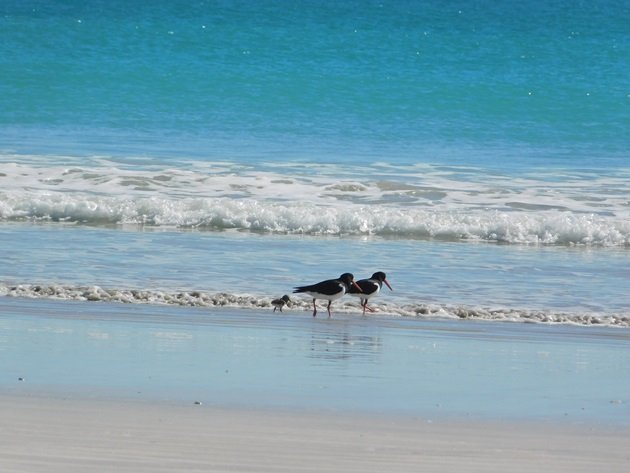
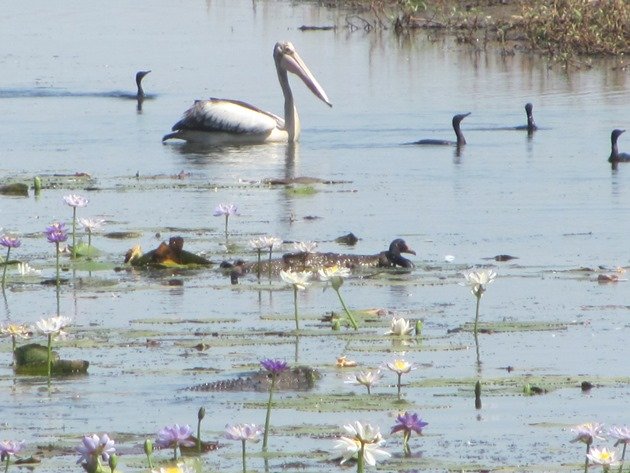
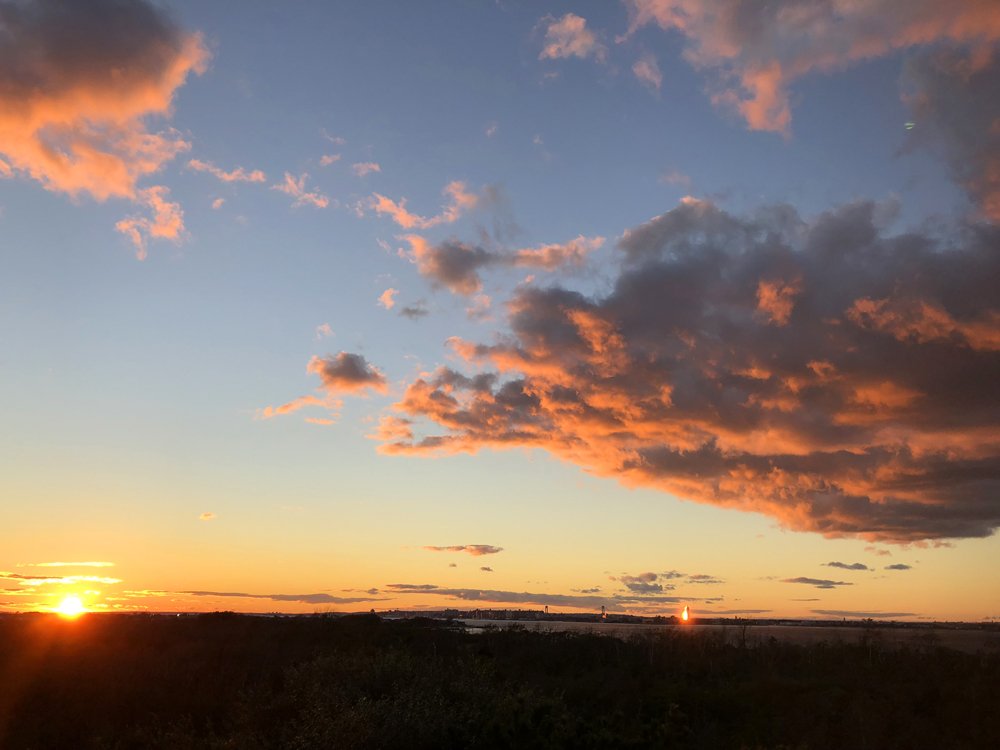

 New writers welcome – please contact us for details.
New writers welcome – please contact us for details.

















Thanks for a great update, Clare. That is such a cute photo of the chicks, each with their right foot up. Really sorry to see that one did not survive. Fingers crossed for the remaining chick. Interesting about the egg grit. Is this to give them calcium?
Hi Lisa, We are not sure about the shell grit, but it is something we always observe them doing for a few days after the eggs hatch. It could also possibly help with digestion.